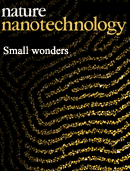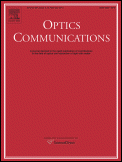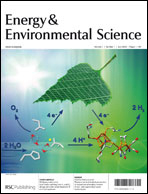Grid computing is the use of widely distributed computer resources to reach a common goal. A computing grid can be thought of as a distributed system with non-interactive workloads that involve many files. Grid computing is distinguished from conventional high-performance computing systems such as cluster computing in that grid computers have each node set to perform a different task/application. Grid computers also tend to be more heterogeneous and geographically dispersed than cluster computers. Although a single grid can be dedicated to a particular application, commonly a grid is used for a variety of purposes. Grids are often constructed with general-purpose grid middleware software libraries. Grid sizes can be quite large.
Communications of the ACM is the monthly journal of the Association for Computing Machinery (ACM). It was established in 1958, with Saul Rosen as its first managing editor. It is sent to all ACM members. Articles are intended for readers with backgrounds in all areas of computer science and information systems. The focus is on the practical implications of advances in information technology and associated management issues; ACM also publishes a variety of more theoretical journals. The magazine straddles the boundary of a science magazine, trade magazine, and a scientific journal. While the content is subject to peer review, the articles published are often summaries of research that may also be published elsewhere. Material published must be accessible and relevant to a broad readership.
MOSIX is a proprietary distributed operating system. Although early versions were based on older UNIX systems, since 1999 it focuses on Linux clusters and grids. In a MOSIX cluster/grid there is no need to modify or to link applications with any library, to copy files or login to remote nodes, or even to assign processes to different nodes – it is all done automatically, like in an SMP.
The IEEE Transactions on Software Engineering is a monthly peer-reviewed scientific journal published by the IEEE Computer Society. It was established in 1975 and covers the area of software engineering. It is considered the leading journal in this field.
Sun Cloud was an on-demand cloud computing service operated by Sun Microsystems prior to Sun's acquisition by Oracle Corporation. The Sun Cloud Compute Utility provided access to a substantial computing resource over the Internet for US$1 per CPU-hour. It was launched as Sun Grid in March 2006—the same month Amazon Web Services began offering their first IT infrastructure services. It was based on and supported open source technologies such as Solaris 10, Sun Grid Engine, and the Java platform.

Nature Nanotechnology is a monthly peer-reviewed scientific journal published by Nature Publishing Group. It was established in October 2006. The editor-in-chief is Alberto Moscatelli. It covers all aspects of nanoscience and nanotechnology.

European Grid Infrastructure (EGI) is a series of efforts to provide access to high-throughput computing resources across Europe using grid computing techniques. The EGI links centres in different European countries to support international research in many scientific disciplines. Following a series of research projects such as DataGrid and Enabling Grids for E-sciencE, the EGI Foundation was formed in 2010 to sustain the services of EGI.

Optics Letters is a biweekly peer-reviewed scientific journal published by Optica. It was established in July 1977. The editor-in-chief is Miguel Alonso. The journal covers all topics pertaining to optics and photonics. Publishing formats are short and rapid communications, with articles being limited to four journal pages.

Optics Communications is a peer-reviewed scientific journal published by Elsevier. It covers all fields of optical science and technology and was established in 1969.

Volunteer computing is a type of distributed computing in which people donate their computers' unused resources to a research-oriented project, and sometimes in exchange for credit points. The fundamental idea behind it is that a modern desktop computer is sufficiently powerful to perform billions of operations a second, but for most users only between 10–15% of its capacity is used. Common tasks such as word processing or web browsing leave the computer mostly idle.

A computer cluster is a set of computers that work together so that they can be viewed as a single system. Unlike grid computers, computer clusters have each node set to perform the same task, controlled and scheduled by software. The newest manifestation of cluster computing is cloud computing.

Energy & Environmental Science is a monthly peer-reviewed scientific journal publishing original (primary) research and review articles. The journal covers work of an interdisciplinary nature in the biochemical and biophysical sciences and chemical and mechanical engineering disciplines. It covers energy area. Energy & Environmental Science is published by the Royal Society of Chemistry.
The Open Science Grid Consortium is an organization that administers a worldwide grid of technological resources called the Open Science Grid, which facilitates distributed computing for scientific research. Founded in 2004, the consortium is composed of service and resource providers, researchers from universities and national laboratories, as well as computing centers across the United States. Members independently own and manage the resources which make up the distributed facility, and consortium agreements provide the framework for technological and organizational integration.
ACM Computing Surveys is peer-reviewed quarterly scientific journal and is published by the Association for Computing Machinery. It publishes survey articles and tutorials related to computer science and computing. The journal was established in 1969 with William S. Dorn as founding editor-in-chief.
IEEE Transactions on Antennas and Propagation is a peer-reviewed scientific journal published by the IEEE Antennas & Propagation Society. It covers research on and applications of all aspects of antenna technology and the propagation of electromagnetic waves. The journal was established in 1952 and since 2022 the Editor-in-chief is Konstantina Nikita. Since 1952, this journal has delivered many thousands of articles on a wide range of topics of interest to specialists, practicing engineers, educators and students in the field of interest of the IEEE Antennas & Propagation Society. The Transactions publishes 12 issues per year and occasional Special Issues amounting to about 6000 pages annually.
IEEE Microwave and Wireless Components Letters is a monthly peer-reviewed scientific journal published by the IEEE Microwave Theory and Techniques Society. The editor-in-chief is Roberto Gómez García. The journal covers research on electromagnetic radiation and the relevant, physical components to achieve such radiations. It focuses on devices, intermediate parts of systems, and completed systems of the interested wavelengths, but also includes papers which emphasize theory, experiment, and applications of the subjects covered.

Acta Materialia is a peer-reviewed scientific journal published twenty times per year by Elsevier on behalf of Acta Materialia Inc. The editor-in-chief is Gregory S. Rohrer. The journal covers research on all aspects of materials science and publishes original papers and commissioned reviews called Overviews.
APL Materials is a peer-reviewed open access scientific journal published by the American Institute of Physics. The editor-in-chief is Judith L. MacManus-Driscoll. It covers bioinspired materials, magnetic materials, photovoltaics, tissue engineering, and various other topics. According to the Journal Citation Reports, the journal has a 2021 impact factor of 6.635.

The International Journal of Energy Research is a peer-reviewed open-access scientific journal published by John Wiley & Sons. It covers fossil, nuclear, and renewable energy sources, and research into energy storage. It was established in 1977 and the editor-in-chief is Akshay Kumar Saha.

Computers & Graphics is a peer-reviewed scientific journal that covers computer graphics and related subjects such as data visualization, human-computer interaction, virtual reality, and augmented reality. It was established in 1975 and originally published by Pergamon Press. It is now published by Elsevier, which acquired Pergamon Press in 1991. From 2018 to 2022 Graphics and Visual Computing was an open access sister journal sharing the same editorial team and double-blind peer-review policies. It has since merged into GMOD, the International Journal of Graphical Models.









